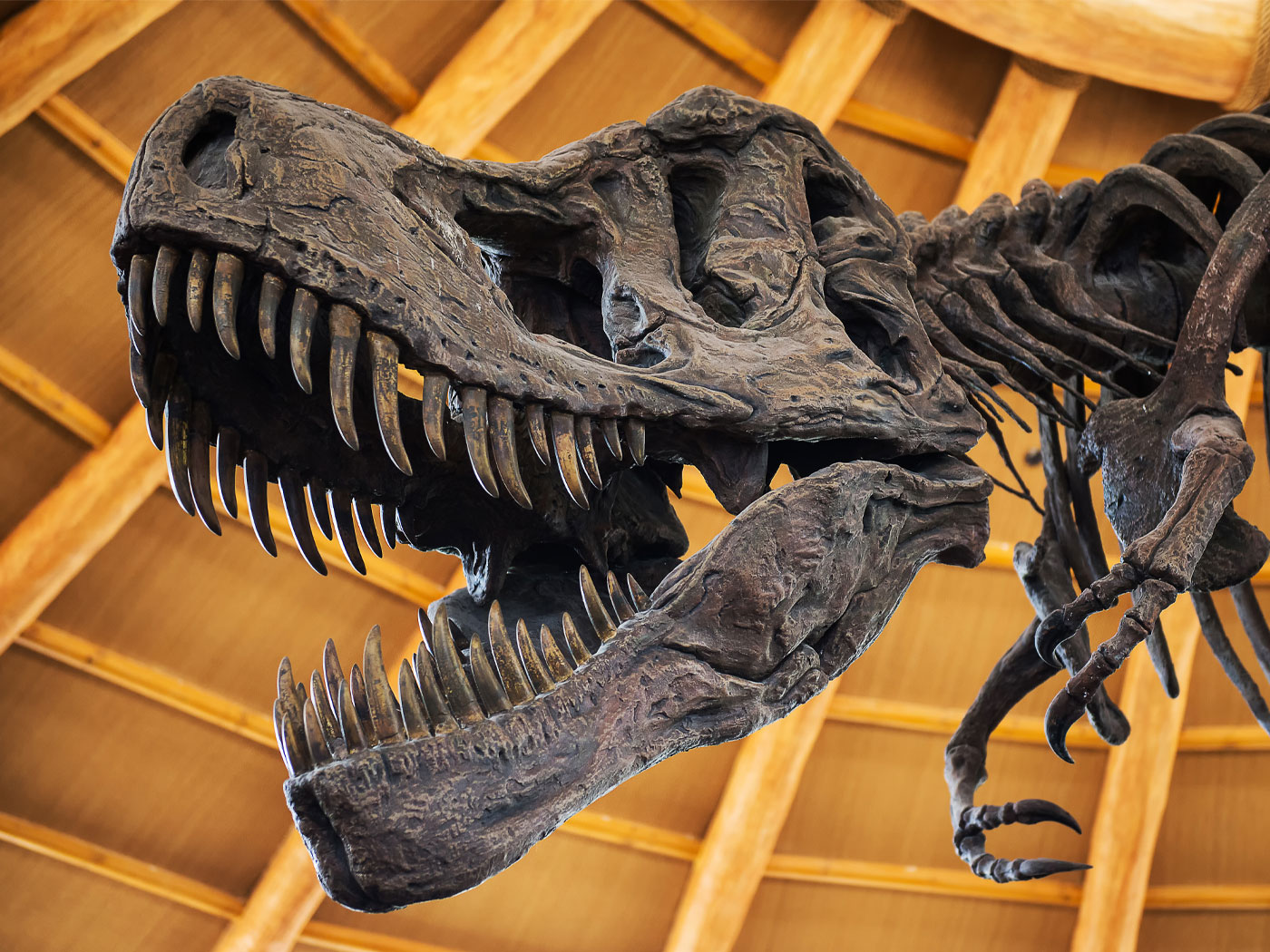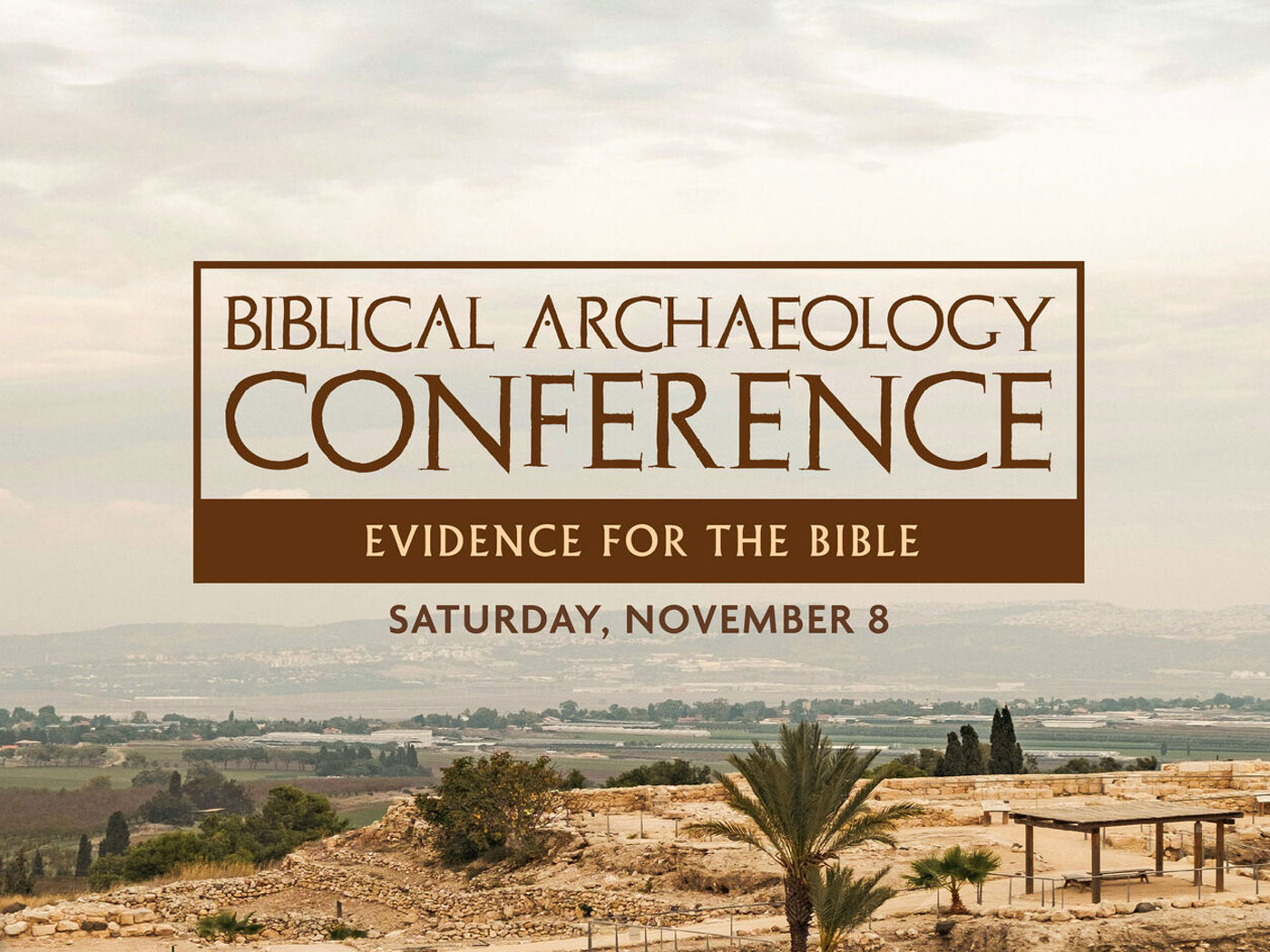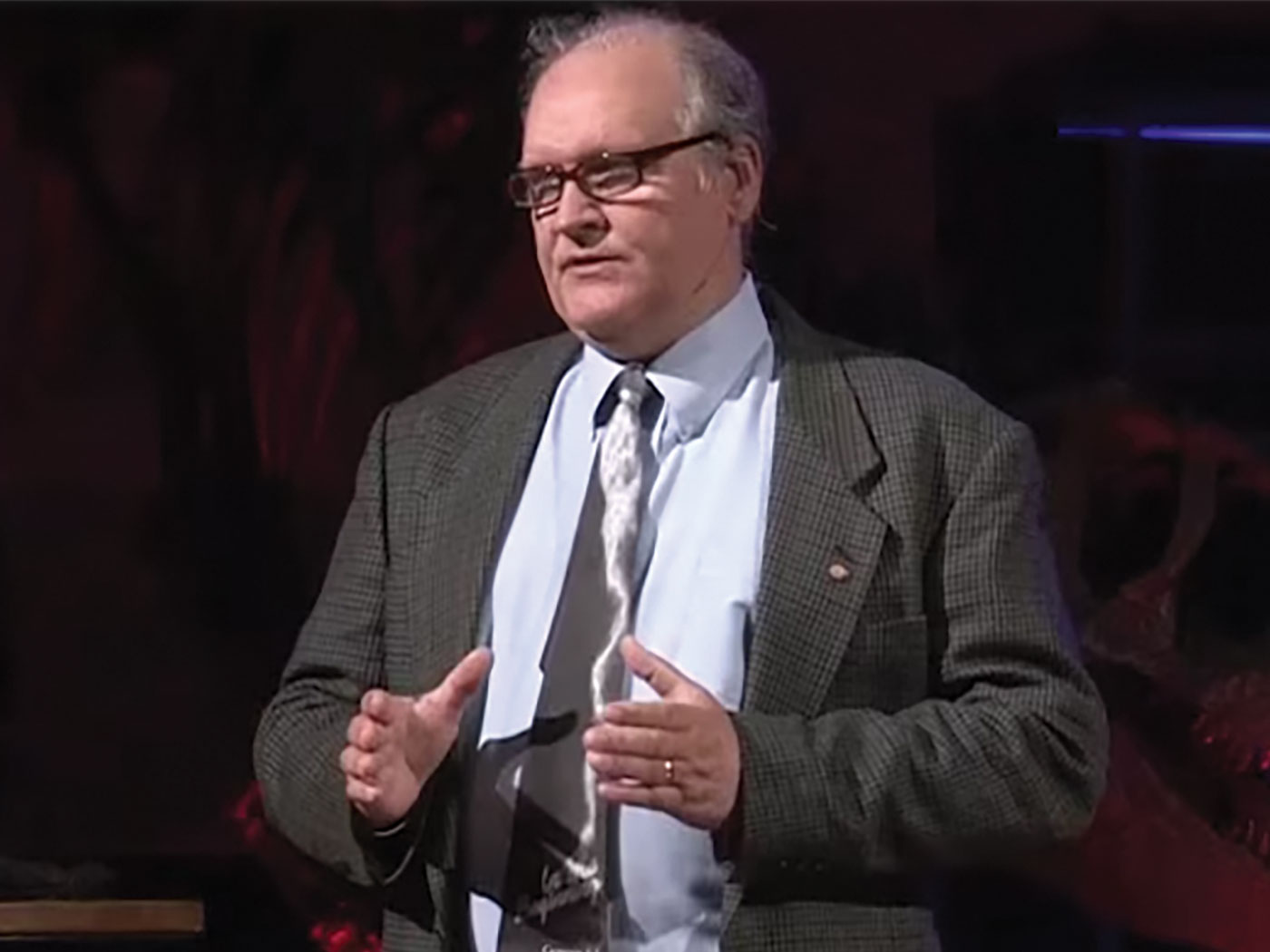This impact pamphlet was written by a scientist, and a science educator, and reviewed by an attorney, to provide a brief summary of the scientific evidence supporting creation. The text materials and references listed at the end together give a more thorough discussion of this scientific evidence.
Introduction
Public schools in many localities are teaching two scientific models - the creation model and the evolution model of the origin of the universe, of life, and of man. There is apparent scientific evidence for creation, which is summarized in this pamphlet, just as there is apparent scientific evidence for evolution. The purpose of this pamphlet is to summarize the evidence that shows that:
| "The creation model is at least as scientific as the evolution model, and is at least as nonreligious as the evolution model." |
This scientific evidence for both models can be taught in public schools without any mention of religious doctrine, whether the Bible or the Humanist Manifesto. There are text materials and teacher handbooks that have been prepared for a fair presentation of both models, creation and evolution. There are also seminars and audiovisuals for training teachers to offer both models of origins.
|
"This scientific evidence both for creation and for evolution can and must be taught without any religious doctrine, whether the Bible or the Humanist Manifesto." "Creation-science proponents want public schools to teach all the scientific data, censoring none, but do not want any religious doctrine to be brought into science classrooms." |
Definitions of the Creation Model and the Evolution Model
The scientific model of creation, in summary, includes the scientific evidence for a sudden creation of complex and diversified kinds of life, with systematic gaps persisting between different kinds and with genetic variation occurring within each kind since that time. The scientific model of evolution, in summary, includes the scientific evidence for a gradual emergence of present life kinds over aeons of time, with emergence of complex and diversified kinds of life from simpler kinds and ultimately from nonliving matter. The creation model questions vertical evolution, which is the emergence of complex from simple and change between kinds, but it does not challenge what is often called horizontal evolution or microevolution, which creationists call genetic variation or species or subspecies formation within created kinds. The following chart lists seven aspects of the scientific model of creation and of the scientific model of evolution:
| The creation model includes the scientific evidence and the related inferences suggesting that: | The evolution model includes the scientific evidence and the related inferences suggesting that: |
|---|---|
| I. The universe and the Solar system were suddenly created. | I. The universe and the solar system emerged by naturalistic processes. |
| II. Life was suddenly created. | II. Life emerged from nonlife by naturalistic processes. |
| III. All present living kinds of animals and plants have remained fixed since creation, other than extinctions, and genetic variation in originally created kinds has only occurred within narrow limits. | III. All present kinds emerged from simpler earlier kinds, so that single-celled organisms evolved into invertebrates, then vertebrates, then amphibians, then reptiles, then mammals, then primates, including man. |
| IV. Mutation and natural selection are insufficient to have brought about any emergence of present living kinds from a simple primordial organism. | IV. Mutation and natural selection have brought about the emergence of present complex kinds from a simple primordial organism. |
| V. Man and apes have a separate ancestry. | V. Man and apes emerged from a common ancestor. |
| VI. The earth's geologic features appear to have been fashioned largely by rapid, catastrophic processes that affected the earth on a global and regional scale (catastrophism). | VI. The earth's geologic features were fashioned largely by slow, gradual processes, with infrequent catastrophic events restricted to a local scale (uniformitarianism). |
| VII. The inception of the earth and of living kinds may have been relatively recent. | VII. The inception of the earth and then of life must have occurred several billion years ago. |
I. The Universe and the Solar System Were Suddenly Created.
The First Law of Thermodynamics states that the total quantity of matter and energy in the universe is constant. The Second Law of Thermodynamics states that matter and energy always tend to change from complex and ordered states to disordered states. Therefore the universe could not have created itself, but could not have existed forever, or it would have run down long ago. Thus the universe, including matter and energy, apparently must have been created. The "big-bang" theory of the origin of the universe contradicts much physical evidence and seemingly can only be accepted by faith.1 This was also the case with the past cosmogonies theories of evolutionists that have been discarded, such as Hoyle’s steady-state theory. The universe has "obvious manifestations of an ordered, structured plan or design." Similarly, the electron is materially inconceivable and yet it is so perfectly known through its effects," yet a "strange rationale makes some physicists accept the inconceivable electrons as real while refusing to accept the reality of a Designer." "The inconceivability of some ultimate issue (which will always lie outside scientific resolution) should not be allowed to rule out any theory that explains the interrelationship of observed data and is useful for prediction," in the words of Dr. Wernher von Braun, the renowned late physicist in the NASA space program.
II. Life Was Suddenly Created.
Life appears abruptly and in complex forms in the fossil record,2 and gaps appear systematically in the fossil record between various living kinds.3 These facts indicate that basic kinds of plants and animals were created. The Second Law of Thermodynamics states that things tend to go from order to disorder (entropy tends to increase) unless added energy is directed by a conversion mechanism (such as photosynthesis), whether a system is open or closed. Thus simple molecules and complex protein, DNA, and RNA molecules seemingly could not have evolved spontaneously and naturalistically into a living cell;4 such cells apparently were created. The laboratory experiments related to theories on the origin of life have not even remotely approached the synthesis of life from nonlife, and the extremely limited results have depended on laboratory conditions that are artificially imposed and extremely improbable.5 The extreme improbability of these conditions and the relatively insignificant results apparently show that life did not emerge by the process that evolutionists postulate.
| "One example of the scientific evidence for creation is the sudden appearance of complex fossilized life in the fossil record, and the systematic gaps between fossilized kinds in that record. The most rational inference from this evidence seemingly is that life was created and did not evolve." |
III. All Present Living Kinds of Animals and Plants Have Remained Fixed Since Creation, Other than Extinctions, and Genetic Variation in Originally Created Kinds Has Only Occurred within Narrow Limits.
Systematic gaps occur between kinds in the fossil record.6 None of the intermediate fossils that would be expected on the basis of the evolution model have been found between single celled organisms and invertebrates, between invertebrates and vertebrates, between fish and amphibians, between amphibians and reptiles, between reptiles and birds or mammals, or between "lower" mammals and primates.7 While evolutionists might assume that these intermediate forms existed at one time, none of the hundreds of millions of fossils found so far provide the missing links. The few suggested links such as Archoeopteryx and the horse series have been rendered questionable by more detailed data. Fossils and living organisms are readily subjected to the same criteria of classification. Thus present kinds of animals and plants apparently were created, as shown by the systematic fossil gaps and by the similarity of fossil forms to living forms. A kind may be defined as a generally interfertile group of organisms that possesses variant genes for a common set of traits but that does not interbreed with other groups of organisms under normal circumstances. Any evolutionary change between kinds (necessary for the emergence of complex from simple organisms) would require addition of entirely new traits to the common set and enormous expansion of the gene pool over time, and could not occur from mere ecologically adaptive variations of a given trait set (which the creation model recognizes).
IV. Mutation and Natural Selection Are Insufficient To Have Brought About Any Emergence of Present Living Kinds from a Simple Primordial Organism.
The mathematical probability that random mutation and natural selection ultimately produced complex living kinds from a simpler kind is infinitesimally small even after many billions of years.8 Thus mutation and natural selection apparently could not have brought about evolution of present living kinds from a simple first organism. Mutations are always harmful or at least nearly always harmful in an organism's natural environment.9 Thus the mutation process apparently could not have provided the postulated millions of beneficial mutations required for progressive evolution in the supposed five billion years from the origin of the earth until now, and in fact would have produced an overwhelming genetic load over hundreds of millions of years that would have caused degeneration and extinction. Natural selection is a tautologous concept (circular reasoning), because it simply requires the fittest organisms to leave the most offspring and at the same time it identifies the fittest organisms as those that leave the most offspring. Thus natural selection seemingly does not provide a testable explanation of how mutations would produce more fit organisms.10
V. Man and Apes Have a Separate Ancestry.
Although highly imaginative "transitional forms" between man and ape-like creatures have been constructed by evolutionists based on very fragmentary evidence, the fossil record actually documents the separate origin of primates in general,11 monkeys,12 apes,13 and men. In fact, Lord Zuckerman (not a creationist) states that there are no "fossil traces" of a transformation from an ape-like creature to man.14 The fossils of Neanderthal Man were once considered to represent a primitive sub-human (Homo neanderthalensis), but these "primitive" features are now known to have resulted from nutritional deficiencies and pathological conditions; he is now classified as fully human.15 Ramapithecus was once considered to be partially man-like, but is now known to be fully ape-like.16 Australopithecus, in the view of some leading evolutionists, was not intermediate between ape and man and did not walk upright.17 The strong bias of many evolutionists in seeking a link between apes and man is shown by the near-universal acceptance of two "missing links" that were later proved to be a fraud in the case of Piltdown Man (Eoanthropus) and a pig's tooth in the case of Nebraska Man (Hesperopithecus).18
VI. The Earth's Geologic Features Were Fashioned Largely by Rapid, Catastrophic Processes that Affected the Earth on a Global and Regional Scale (Catastrophism).
Catastrophic events have characterized the earth's history. Huge floods, massive asteroid collisions, large volcanic eruptions, devastating landslides, and intense earthquakes have left their marks on the earth. Catastrophic events appear to explain the formation of mountain ranges, deposition of thick sequences of sedimentary rocks with fossils, initiation of the glacial age, and extinction of dinosaurs and other animals. Catastrophism (catastrophic changes), rather than uniformitarianism (gradual changes), appears to be the best interpretation of a major portion of the earth's geology. Geologic data reflect catastrophic flooding. Evidences of rapid catastrophic water deposition include fossilized tree trunks that penetrate numerous sedimentary layers (such as at Joggins, Nova Scotia), widespread pebble and boulder layers (such as the Shinarump Conglomerate of the southwestern United States), fossilized logs in a single layer covering extensive areas (such as Petrified Forest National Park), and whole closed clams that were buried alive in mass graveyards in extensive sedimentary layers (such as at Glen Rose, Texas). Uniform processes such as normal river sedimentation, small volcanoes, slow erosion, and small earthquakes appear insufficient to explain large portions of the geologic record. Even the conventional uniformitarian geologists are beginning to yield to evidences of rapid and catastrophic processes.19
VII. The Inception of the Earth and of Living Kinds May Have Been Relatively Recent.
Radiometric dating methods (such as the uranium-lead and potassium-argon methods) depend on three assumptions: (a) that no decay product (lead or argon) was present initially or that the initial quantities can be accurately estimated, (b) that the decay system was closed through the years (so that radioactive material or product did not move in or out of the rock), and (c) that the decay rate was constant over time.20 Each of these assumptions may be questionable: (a) some nonradiogenic lead or argon was perhaps present initially;21 (b) the radioactive isotope (uranium or potassium isotopes) can perhaps migrate out of, and the decay product (lead or argon) can migrate into, many rocks over the years;22 and (c) the decay rate can perhaps change by neutrino bombardment and other causes.23 Numerous radiometric estimates have been hundreds of millions of years in excess of the true age. Thus ages estimated by the radiometric dating methods may very well be grossly in error. Alternate dating methods suggest much younger ages for the earth and life. Estimating by the rate of addition of helium to the atmosphere from radioactive decay, the age of the earth appears to be about 10,000 years, even allowing for moderate helium escape. Based on the present rate of the earth's cooling, the time required for the earth to have reached its present thermal structure seems to be only several tens of millions of years, even assuming that the earth was initially molten.24 Extrapolating the observed rate of apparently exponential decay of the earth's magnetic field, the age of the earth or life seemingly could not exceed 20,000 years.25 Thus the inception of the earth and the inception of life may have been relatively recent when all the evidence is considered.26
|
"There is scientific evidence for creation from cosmology, thermodynamics, paleontology, biology, mathematical probability, geology, and other sciences." "There are many scientists in each field who conclude that the scientific data best support the creation model, not the evolution model." |
References
1. Slusher, Harold S., The Origin of the Universe, San Diego: Institute for Creation Research (ICR), 1978.
2. E.g., Kay, Marshall & Colbert, Edwin H, Stratigraphy and Life History, New York: John Wiley & Sons, 1965, p, 102;
Simpson, George G., The Major Features of Evolution, New York: Columbia University Press, 1953, p 360: [Paleontologists recognize] that most new species, genera and families, and that nearly all categories above the level of families, appear in the record suddenly and are not led up to by known, gradual, completely continuous transitional sequences.
3. Note 6 infra.
4. E.g., Smith, Charles J. "Problems with Entropy in Biology," Biosystems, V.7, 1975, pp 259, 264. "The earth, moon, and sun constitute an essentialy closed thermodynamic system..." Simpson, George G., "Uniformitariarisrn," in Hecht, Max A. & Steeres, William C., eds., Essays in Evolution and Genetics, New York: Appleton-Century-Crofts, 1970, p. 43.
5. Gish, Duane T., Speculations and Experiments Related to the Origin of Life (A Critique), San Diego: ICR, 1972,
6. E.g., Simpson, George G., "The History of Life," in Tax, Sol, ed. Evolution after Darwin: The Evolution of Life, Chicago:Univ. of Chicago Press, 1960 pp. 117, 149:
Gaps among known orders, classes, and phyla are systematic and almost always large.
7. E.g., Kitts, David S., "Paleontology and Evolutionary Theory," Evolution V. 28 1974, pp.458, 467:
Evolution requires intermediate forms betvveen species and paleontology does not provide them. For examples of the lack of transitional fossils, Ommaney, F. D. The Fishes, New York: Time Life, Inc., 1964, p 60 (invertebrates to vertebrates); Romer, Alfred S., Vertebrate Paleontology, Chicago Univ. of Chicago Press, 31 ed., 1966, p.36 (vertebrate fish to amphibians) Swinton, W.E., Biology and Comparative Physiology of Birds, Marshall, A.J., ed., New York Academic Press, V.1, 1960, p.1 (reptiles to birds); Simpson, George G., Tempo and Mode in Evolution, New York: Columbia Univ., Press. 1944, p.l05 (reptiles to mammals); Simons, E.L., Annals N.Y. Acad. Science, V.167, 1969, p.319 (mammals to primates).
8. E.g., Eden, Murray. "Inadequacies of Neo-Darwinian Evolution as a Scientific Theory," in Moorhead, Paul S. & Kaplan, Martin M., eds., Mathematical Challenges to the Neo-Darwinian Interpretation of Evolution, Philadelphia: Wistar Inst. Press, 1967, p,109:
It is our contention that if 'random' is given a serious and crucial interpretation from a probabilisticpoint of view, the randomness postulate is highly implausible and that an adequate scientific theory of evolution must await the discovery and elucidation of new natural laws...
9. E.g., Martin, C.P., "A Non-Geneticist looks at Evolution," American Scientist, V. 41, 1954, p. 100
10. E.g., Popper, Karl, Objective Knowledge, Oxford: Clarendon Press 1975 p. 242
11. E.g., Kelso, A.J., Physical Anthropology, 2nd ed., Philadelphia, J.B. Lippincott, 1974. p 142
12. E.g., Ibid., pp.150,151
13. E.g., Simons, E.L., Annals N.Y. Acad. Science. V.102, 1962, p.293, Simons, E.L., "The Early Relatives of Man," Scientfic American, V.211, July 1964 p 50
14. E.g., Zuckerman, Sir Solly, Beyond the Ivory Tower, New York, Taplinger Pub. Co., 1970, p.64.
15. E.q., Ivanhoe, Francis, "Was Virchow Right about Neandert[h]al?", Nature V. 227, 1970, p. 577
16. E.g., Zuckerman, pp. 75-94; Eckhardt, Robert B., "Population Genetics and Human Origins", Scientific American, V.226, 1972, pp.94,101.
17. E.g., Oxnard, Charles E., "Human Fossils: New Views of Old Bones," American Biology Teacher, V.41, 1979, p.264.
18. E.g., Straus, William L., "The Great Piltdown Hoax," Science, V.119, 1954, p.265 (Piltdown Man); Gregory, William K., "Hesperopithecus Apparently Not an Ape Nor a Man," Science, V.66,1927, p. 579 (Nebraska Man).
19. E.g., Bhattacharyya, A., Sarkar, S. & Chanda, S.K., "Storm Deposits in the Late Proterozoic Lower Bhander Sandstone of ... India," Journal of Sedimentary Petrology. V.50,1980, p. 1327:
Until recently, noncatastrophic uniformitarianism had dominated sedimentologic thought reflecting that sediment formation and dispersal owe their genesis chiefly to the operation of day-to-day geologic events. As a result, catastrophic events, e.g.. storms, earthquakes, etc., have been denied their rightful place in ancient and recent sedimentary records. Of late, however, there has been a welcome rejuvenation of [the] concept of catastrophism in geologic thought.
J. Harlan Bretz recently stated, on receiving the Penrose Medal (the highest geology award in America), "Perhaps, I can be credited with reviving and demystifying legendary Catastrophism and challenging a too rigorous Uniformitarianism." Geological Society of America, "GSA Medals and Awards," GSA News & Information, V. 2, 1980, p.40.
20. E.g., Stansfield, Williarn D., The Science of Evolution, New York: MacMillan Publishing Co., 1977, pp. 83-84; Faul, Henry, Ages of Rocks, Planets and Stars, New York: McGraw-Hill Co., 1966, pp. 19-20, 41-49. See generally Slusher, Harold S., Critique of Radiometnic Dating, San Diego: ICR, 1973.
21. E.g., Kerkut, G.A., Implications of Evolution, New York: Pergamon Press, 1960, pp.138,139.
22. E.g., Faul, p.61.
23. E.g., Jueneman, Frederick, "Scientific Speculation." Industrial Research, Sept.1972, p.15.
24. Slusher, Harold S. & Gamwell, Thomas P., The Age of the Earth, San Diego: ICR, 1978.
25. Barnes, Thomas G., Origin and Destiny of the Earth's Magnetic Field, San Diego: ICR, 1973.
26. Slusher, Harold S., Age of the Cosmos, San Diego: ICR, 1980; Slusher, Harold S. & Duursma, Stephen J., The Age of the Solar System, San Diego: ICR, 1978.
| "There are text materials and teacher handbooks for public schools that have been prepared for a fair presentation of the scientific evidences for both the creation model and the evolution model. There are also seminars and audiovisuals for training teachers to offer both models of origins." |
The Authors:
*Dr. Gish earned his Ph.D. from the University of California at Berkeley in Biochemistry. He has worked as a research biochemist with Cornell University Medical College, the Virus Laboratory, University of California - Berkeley, and The Upjohn Co. Dr. Gish collaborated with one Nobel Prize recipient in elucidating the chemical structure of the protein of tobacco mosaic virus, and with another Nobel Prize winner in synthesis of one of the hormones of the pituitary gland. He presently is Vice President of the Institute for Creation Research.
**Other staff scientists at ICR who helped prepare this summary include Dr. Henry M. Morris, (PhD.), University of Minnesota, Hydraulics; Dr. Kenneth B. Cumming (Ph.D.), Harvard University, Biology; Dr. Gary E. Parker (Ph.D.), Ball State University. Biology; Dr. Theodore W. Rybka (Ph.D.), University of Oklahoma, Physics; and Dr. Harold S. Slusher (M.S.), University of Oklahoma, Geophysics.
***Dr. Bliss earned his Ed.D. from the University of Sarasota in Science Education, with a cognate emphasis in curriculum, instruction, and evaluation in science education. He wrote his dissertation on teaching the two-model approach (comparing evolution-science and creation-science) in public schools. He taught high-school physics, chemistry, and biology for many years and was the Director of Science Education for the large public school district in Racine, Wisconsin. He served as the science consultant for Educational Consulting Associates and for several major publishers of science textbooks, as well as for the University of Wisconsin Research and Development film series. He has written textbook materials for public school instruction in the creation model and the evolution noodel.
****Mr. Bird earned his J.D. from Yale Law School with numerous studies in Constitutional Law, publishing legal articles in the Yale Law Journal and the Harvard Journal of Law & Public Policy on the constitutionality of public schools teaching the scientific evidence for creation along with that for evolution. He was an Editor of the Yale Law Journal, and was the recipient of the Egger Prize of Yale Law School for his article published there.


















